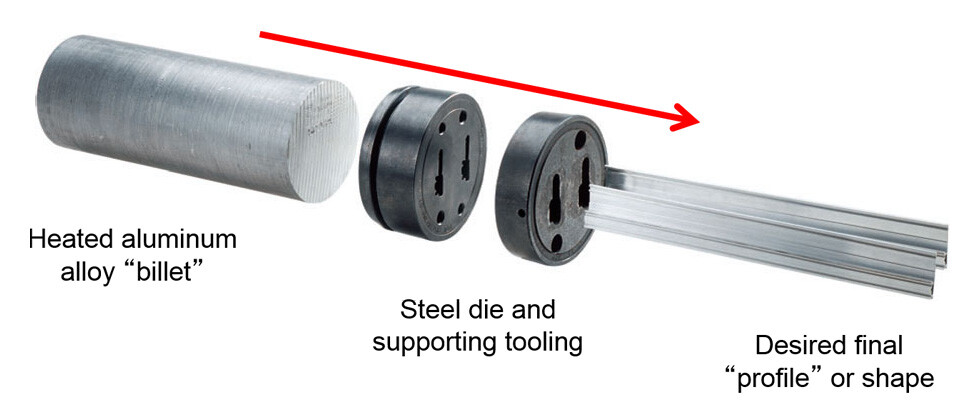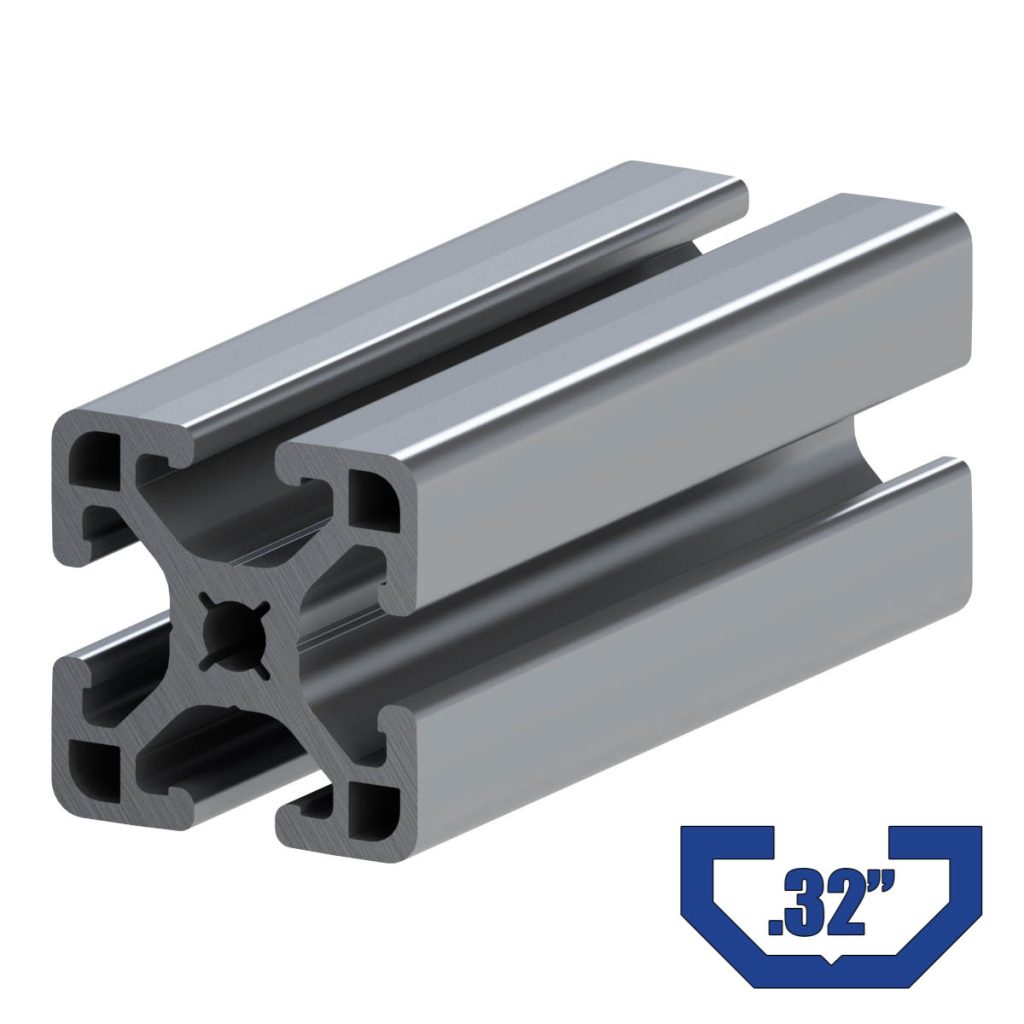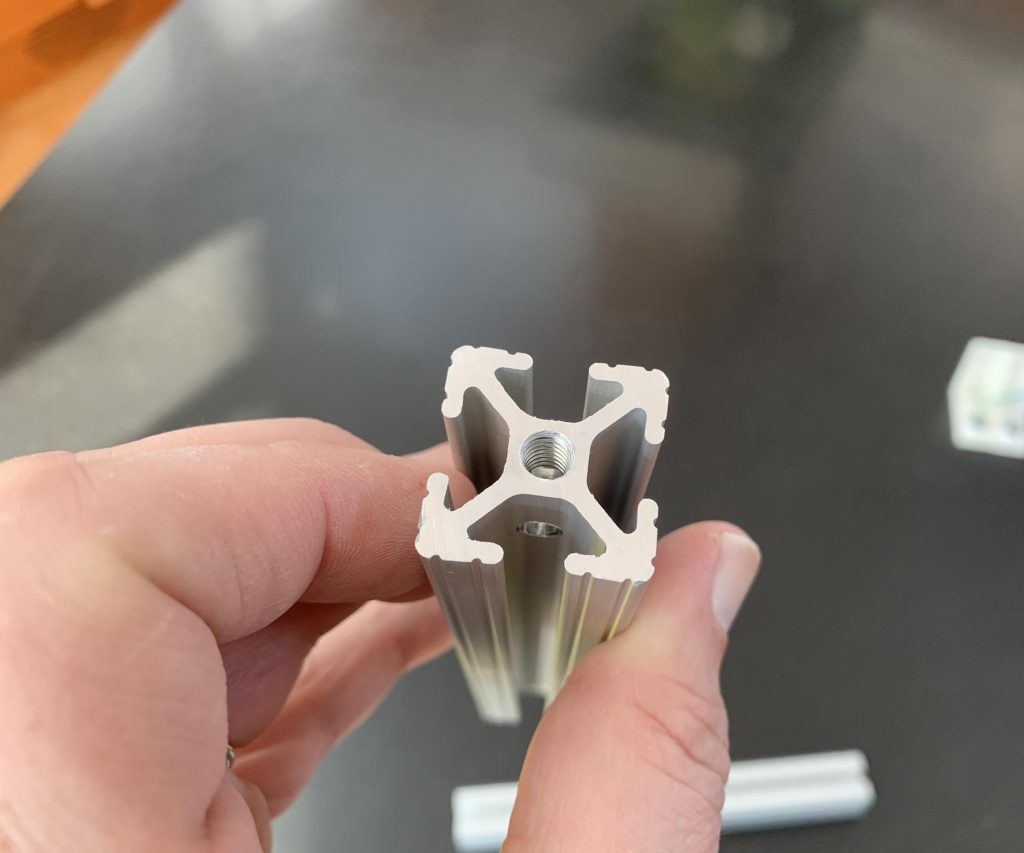Table of Contents
- Frequently Asked Questions
- 1. What type of circular saw blade should I use for cutting aluminum extrusions?
- 2. How can I prevent the aluminum extrusions from vibrating during cutting?
- 3. What safety precautions should I take when cutting aluminum extrusions with a circular saw?
- 4. How can I ensure that the cuts are accurate and straight?
- 5. How can I reduce the risk of burrs or rough edges during cutting?
Aluminum extrusions are a popular material in the world of DIY enthusiasts and professionals alike. Their versatility and strength make them ideal for a range of projects, from building frames to crafting furniture.
But cutting aluminum extrusions can be a daunting task, especially if you’re not familiar with the process. Fortunately, with the right tools and techniques, it’s a job that can be easily accomplished. In this article, we’ll take a closer look at how to cut aluminum extrusions with a circular saw, so you can tackle your next project with confidence. So, let’s get started!
To cut aluminum extrusions with a circular saw, follow these steps:
- Secure the aluminum extrusion to a workbench or sawhorses using clamps or a vise.
- Choose a carbide blade suitable for cutting aluminum and install it on the saw.
- Measure and mark the aluminum extrusion to the desired length.
- Start the saw and slowly guide the blade through the aluminum extrusion, following the marked line.
- Allow the blade to cool down after cutting several pieces.
By following these steps, you can cut aluminum extrusions with a circular saw effectively and safely.
How to Cut Aluminum Extrusions With Circular Saw?
Cutting aluminum extrusions with a circular saw might seem like a daunting task, but it’s actually quite straightforward if you follow the right steps. In this article, we’ll guide you through the process of cutting aluminum extrusions with a circular saw, so you can get the job done right.
Step 1: Choose the Right Blade
The first step in cutting aluminum extrusions with a circular saw is to choose the right blade. You need a blade that’s specifically designed for cutting aluminum, as a regular saw blade will quickly become dull and ineffective. Look for a blade with carbide teeth, as these are designed to cut through aluminum with ease.
When choosing a blade, you should also consider the size of the teeth. A blade with smaller teeth will give you a smoother cut, while a blade with larger teeth will cut through the aluminum more quickly. Choose the size of the teeth based on your needs and preferences.
Step 2: Measure and Mark Your Cut
Before you start cutting, you need to measure and mark your cut. Use a measuring tape to measure the length of the aluminum extrusion you need to cut, and then use a marker to mark where you need to cut. Make sure the mark is clearly visible, as this will guide your saw blade.
Step 3: Secure the Aluminum Extrusion
Next, you need to secure the aluminum extrusion in place. Use clamps to hold the extrusion firmly in place on your work surface. This will prevent the extrusion from moving around while you’re cutting, which could result in an uneven cut or a dangerous accident.
Step 4: Put on Safety Gear
Before you start cutting, it’s important to put on the necessary safety gear. Wear safety glasses to protect your eyes from flying debris, and wear gloves to protect your hands from the saw blade.
Step 5: Start Cutting
Now it’s time to start cutting. Turn on your circular saw and line up the blade with your marked cut line. Slowly and steadily guide the saw blade along the cut line, being careful to keep the blade perpendicular to the aluminum extrusion. Use a steady, even pressure on the saw to ensure a clean, straight cut.
Step 6: Check Your Cut
Once you’ve finished cutting, check your cut to make sure it’s straight and even. If your cut is uneven, you may need to file it down or sand it to achieve a smooth finish.
Step 7: Remove Burrs and Sharp Edges
After cutting, the aluminum extrusion may have burrs or sharp edges. You can remove these by using a deburring tool or a file. Be sure to wear gloves while doing this to protect your hands.
Step 8: Clean Up
Once you’ve finished cutting and deburring the aluminum extrusion, it’s time to clean up. Use a vacuum or a brush to remove any debris or shavings from your work surface, and then put away your tools.
Benefits of Cutting Aluminum Extrusions With a Circular Saw
Cutting aluminum extrusions with a circular saw is a quick and easy way to get the job done. It’s also an affordable option, as circular saws are widely available and relatively inexpensive compared to other cutting tools.
Circular Saw vs. Other Cutting Tools
Circular saws are a great choice for cutting aluminum extrusions because they’re easy to use and affordable. Other cutting tools, such as chop saws or band saws, may be more precise or have more features, but they can also be much more expensive. A circular saw is a great option for DIYers or professionals on a budget.
Conclusion
Cutting aluminum extrusions with a circular saw is a simple process that anyone can do with the right tools and techniques. By following these steps, you can achieve a clean, straight cut every time. Remember to always wear the necessary safety gear, and take your time to ensure a precise cut. With a little practice, you’ll be cutting aluminum extrusions like a pro in no time.
Frequently Asked Questions
Aluminum extrusions are a popular material used in various industries. Cutting them with a circular saw can be a challenging task. To help you out, we have compiled some frequently asked questions and their answers related to cutting aluminum extrusions with a circular saw.
1. What type of circular saw blade should I use for cutting aluminum extrusions?
When cutting aluminum extrusions, it is crucial to use the right type of circular saw blade. You should use a carbide-tipped blade with a triple chip tooth design. The triple chip tooth design helps to reduce heat buildup during cutting, which prevents the blade from dulling quickly. The carbide tips are also more durable, making them ideal for cutting through the hard aluminum extrusions. It is also recommended to use a blade with a lower tooth count, as it will produce fewer chips and reduce the risk of blade binding.
When selecting a circular saw blade, ensure that it is compatible with your saw’s arbor size and has the correct diameter for the blade guard opening. Additionally, make sure that the blade is sharp and free from any damages or cracks before using it.
2. How can I prevent the aluminum extrusions from vibrating during cutting?
Vibrations during cutting can cause inaccurate cuts and damage to the blade or saw. To prevent the aluminum extrusions from vibrating during cutting, you should secure them firmly in place using clamps or a vice. This will ensure that the extrusions remain stable and do not move during the cutting process.
It is also recommended to use a sawhorse or a sturdy workbench as a cutting surface. The surface should be level and have enough space to accommodate the extrusions without any overhang. This will prevent the extrusions from bending or twisting during cutting, which can also cause vibrations.
3. What safety precautions should I take when cutting aluminum extrusions with a circular saw?
Cutting aluminum extrusions with a circular saw can be dangerous if proper safety precautions are not taken. It is essential to wear appropriate safety gear, including safety glasses, gloves, and hearing protection. This will protect you from any flying debris, sparks, or noise produced during cutting.
You should also ensure that the saw is unplugged when changing blades or making any adjustments. Never touch the blade with your bare hands or attempt to remove any chips or debris while the saw is running.
Moreover, it is crucial to follow the manufacturer’s instructions and guidelines when operating the saw. Always use the saw in a well-ventilated area and avoid cutting near flammable materials.
4. How can I ensure that the cuts are accurate and straight?
Accurate and straight cuts are essential when cutting aluminum extrusions, especially when working on projects that require precise measurements. To ensure that the cuts are accurate and straight, you can use a straight edge or a guide.
A straight edge is a long and straight piece of material that you can clamp to the extrusions to guide the saw. Alternatively, you can use a guide that attaches to the saw’s base plate and runs along the extrusion’s edge.
It is also recommended to make a light score along the cutting line with a utility knife or a sharp blade before using the circular saw. This will create a groove that the saw can follow, resulting in a more precise cut.
5. How can I reduce the risk of burrs or rough edges during cutting?
Cutting aluminum extrusions can produce burrs or rough edges, which can be unsightly and may require additional finishing work. To reduce the risk of burrs or rough edges during cutting, you should use a slower cutting speed and apply consistent pressure on the saw.
Additionally, you can use a deburring tool or a sanding block to remove any burrs or rough edges after cutting. It is also recommended to wear gloves when handling the extrusions to prevent any injuries from sharp edges.
In conclusion, cutting aluminum extrusions with a circular saw is a simple process that requires the right tools and techniques. By following the steps outlined above, you can make clean and precise cuts that will help you achieve your desired results. Remember to always wear protective gear and take the necessary safety precautions when working with power tools.
It is important to note that circular saws are not the only tool available for cutting aluminum extrusions. Other options include chop saws, miter saws, and even hand saws. Consider your project requirements and budget before choosing the best tool for the job.
Finally, practice makes perfect when it comes to cutting aluminum extrusions with a circular saw. Don’t be discouraged if your first attempts are not perfect, keep practicing and you will soon become an expert in cutting aluminum extrusions with a circular saw. With the right tools, techniques, and practice, you can achieve professional results in no time.
Request a quote today!
[contact-form-7 id="1578" title="Contact form"]
Please compress the file into a ZIP or RAR file before uploading. Alternatively, send through your RFQ by email.
enquires@unitymanufacture.com





